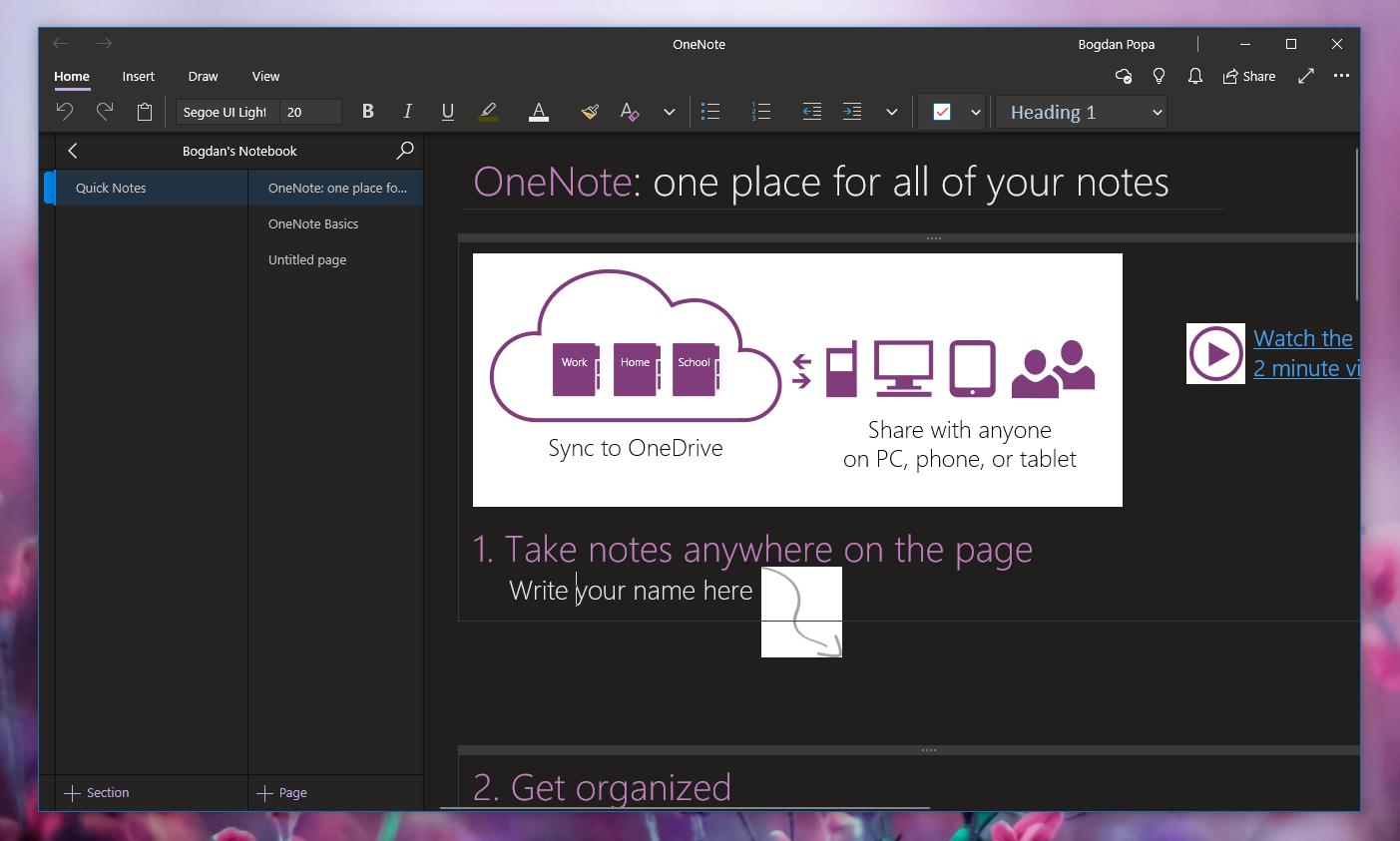

As of March 2020, when you install Office 2019 or Microsoft 365, the OneNote desktop app is installed alongside the Word, PowerPoint, and Excel desktop apps. It is also the version of OneNote that offers the most customization options (File > Options). This is the only version of OneNote that supports local notebook storage on your PC's hard drive in addition to cloud storage. The current notebook's colored section tabs are displayed horizontally on the screen, and the list of page tabs is displayed on the right side of the screen by default. The OneNote desktop app has a full Office ribbon interface that can be permanently displayed or hidden as needed. It runs on any currently supported version of Windows – including all editions of Windows 10. The OneNote desktop app on Windows is part of Office 2019 and Microsoft 365, but it can also be downloaded as a standalone app and used on any PC.

OneNote (formerly called "OneNote 2016"), the free desktop app that runs on all supported versions of Microsoft Windows and is part of Office 2019 and Microsoft 365.

Microsoft has highlighted the differences between the two OneNote variants in this document. The Windows 10 app cannot match the features of the desktop app. The problem with OneNote is that the desktop app (OneNote 2016) and the Windows 10 OneNote app diverge functionally.


 0 kommentar(er)
0 kommentar(er)
